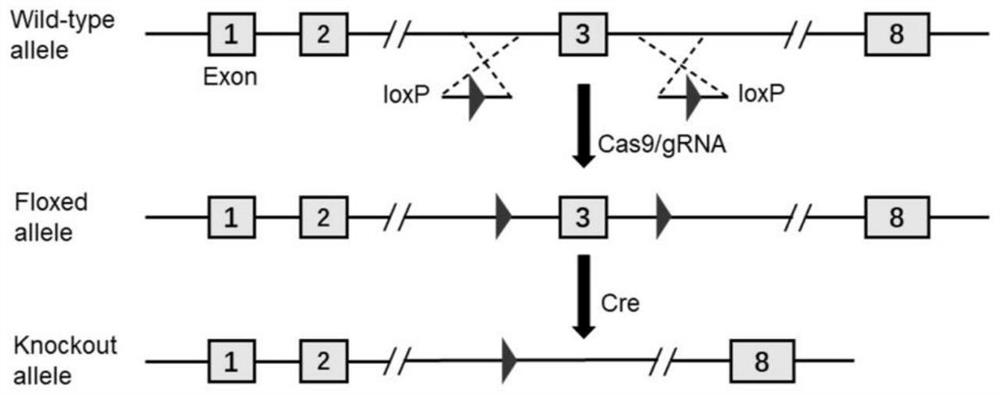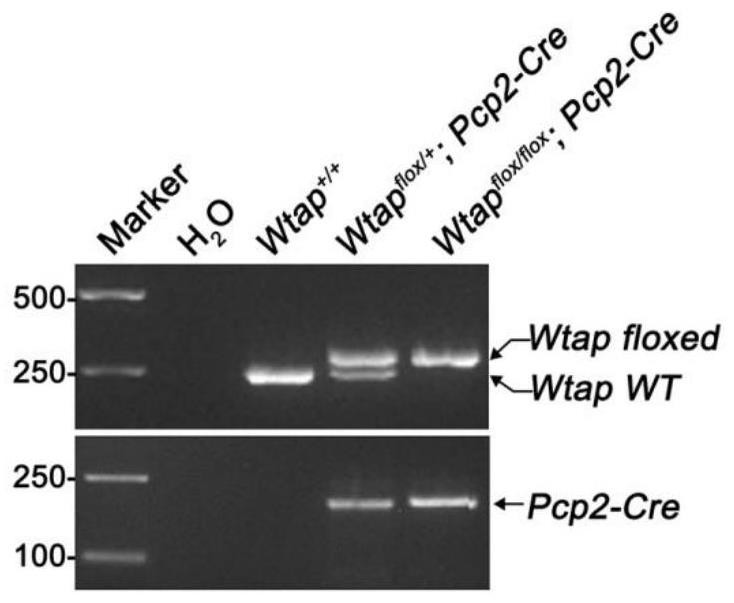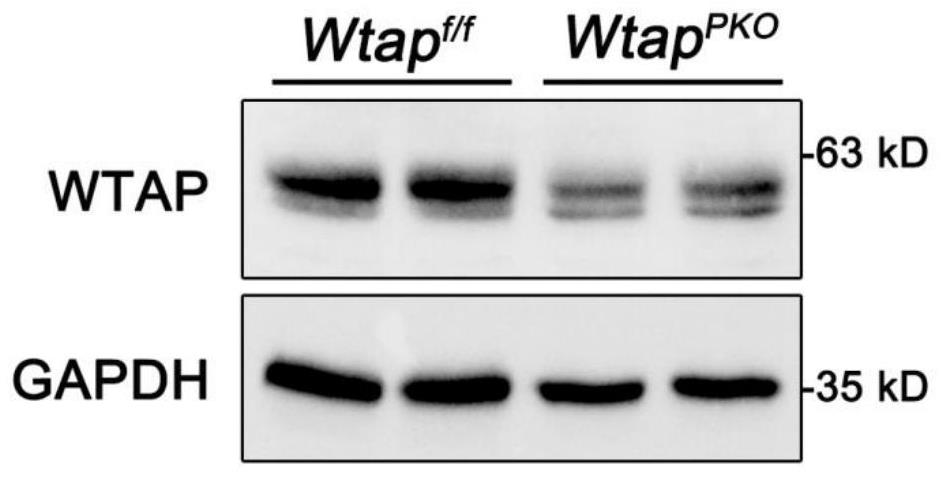Construction method and application of cerebellar ataxia disease model
A construction method and ataxia technology, applied in the biological field, can solve the problems of lack of treatment methods and unclear pathogenesis of cerebellar ataxia
- Summary
- Abstract
- Description
- Claims
- Application Information
AI Technical Summary
Problems solved by technology
Method used
Image
Examples
Embodiment 1
[0051] This example provides a method for constructing a cerebellar ataxia disease model, and this example uses mice as the target animals. figure 1 The mouse knockout strategy map, Wtap conditional gene knockout mice (named Wtap cko, loxp sequence is located on both sides of the 3rd exon, the target sequence to be knocked out is the 3rd exon of the Wtap gene) was purchased from Shanghai Southern Model Organisms Center, Inc (Shanghai Model Organisms Center, Inc)
[0052] (https: / / www.modelorg.com / portal / article / index / id / 3724 / post_type / 3.html).
[0053] 2) The heterozygous Wtap gene knockout mice obtained in step 1) were mated with each other to obtain Wtap gene knockout homozygous mice.
[0054] 3) The Wtap gene conditional knockout homozygous animal obtained in step 2) was mated with the Pcp2-Cre gene transgenic animal (Pcp2-Cre transgenic mouse (MGI: 2137515) purchased from The Jackson Laboratory) , to obtain Wtap conditional knockout gene animals in cerebellar Purkinje ce...
Embodiment 2
[0056] In this example, the PCR method was used to identify the genotypes of the progeny mice.
[0057] Methods as below:
[0058] 1) Cut a little mouse tail tip sample and place it in a 1.5ml clean centrifuge tube;
[0059] 2) Add 100ul lysate solution (40mM NaOH, 0.2mM EDTA solution) to the centrifuge tube, and heat in a metal bath at 100°C for 1h;
[0060] 3) After cooling to room temperature, 100 μl of neutralizing solution (40 mM Tris-HCl, pH 5.5) was added to the centrifuge tube, centrifuged at 10,000 g for 2 min, and the supernatant was taken for mouse genotyping.
[0061] 4) PCR amplification: the reaction system is:
[0062] 2×Taq Mix 10μL
[0063] Tissue lysate 4μL
[0064] Upstream primer (Wtap-loxP-Forward (abbreviated as F2) or Pcp2-Cre-Forward (abbreviated as CreF)), 1 μL (concentration: 10 mM)
[0065] Downstream primer (Wtap-loxP-Reverse (abbreviated as R2) or Pcp2-Cre-Reverse (abbreviated as CreR)), 1 μL (concentration: 10 mM)
[0066] wxya 2 O 6 μL.
...
Embodiment 3
[0078] The gene knockout efficiency in the cerebellum of Pcp2-Cre knockout mice was analyzed by Western blot.
[0079] Methods as below:
[0080] 1) The cerebellums of the control and knockout mice were obtained after routine sacrifice, and after the tissues were fully ground, 200ul of protein lysate RIPA was added.
[0081] 2) After sonicating the cells, they were lysed on ice for 20 min.
[0082] 3) Centrifuge at 16,000 g for 10 min at 4°C, transfer the supernatant to another clean centrifuge tube, add 50 μl of protein sample solution, mix well and heat at 95°C for 5 min.
[0083] 4) After the samples were cooled, 20 μl were taken respectively and subjected to polyacrylamide gel electrophoresis (SDS-PAGE) at 160V to separate proteins.
[0084] 5) After SDS-PAGE is finished, cut a nitrocellulose membrane of appropriate size, spread filter paper, glue, nitrocellulose membrane and filter paper in a certain order, and after removing air bubbles, transfer to the membrane in an ...
PUM
| Property | Measurement | Unit |
|---|---|---|
| thickness | aaaaa | aaaaa |
Abstract
Description
Claims
Application Information
 Login to View More
Login to View More - R&D
- Intellectual Property
- Life Sciences
- Materials
- Tech Scout
- Unparalleled Data Quality
- Higher Quality Content
- 60% Fewer Hallucinations
Browse by: Latest US Patents, China's latest patents, Technical Efficacy Thesaurus, Application Domain, Technology Topic, Popular Technical Reports.
© 2025 PatSnap. All rights reserved.Legal|Privacy policy|Modern Slavery Act Transparency Statement|Sitemap|About US| Contact US: help@patsnap.com



